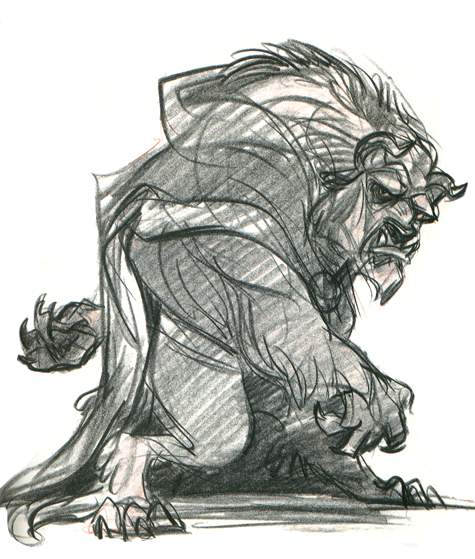Today I stood about five feet from a man who knows how to draw. You might think that a lot of people know how to draw.. But Glen Keane KNOWS how to draw. I listened for a few hours to all his knowledge and insight and it was very inspirational to see him draw and talk. Even though it seems as the drawing magically flows from his pencil, there is no magic, there are no tricks. Even Glen himself stressed that all he is doing is basic drawing principles.
It might be comforting to imagine that good drawing takes deep understanding of the cosmos and the insight of line and only deities such as Glen Keane are genius enough to penetrate the mysteries of the pencil... (and all the animation geeks start slobbering on cue)
But isn't it more empowering and motivating to know he accomplishes these great flawless drawings based on a few drawing principles we all learned in college? The only difference is that he executes THE PRINCIPLES while the most of us forget them.
Glen Kleane stressed three words over and over.. Rhythm, Tilt, and Twist. When a drawing looks bad, it most likely lacks either one or more (rhythm,tilt, or twist) DANNY WHAT DO THESE WORDS MEAN?? TELL US HIS SECRETS!!!
RHYTHM: (see picture above and below) The over all movement of the drawing. IT IS NOT the line of action. The line of action is a huge understatement of what rhythm is. Rhythm is how each line curves into the next. And how each line contributes to the over all shape of the drawing. Glen Keane used a river as an analogy. He said imagine that you view a river from above, and you see the curves and the bends the water makes and how the landscape controls where the water flows. Everything works together to give the river it's overall rhythm. So in a drawing, every line flows and curves into each other creating a rythm. it'll capture your eyes lead it around the drawing in a sort of dance.

TILT: A very basic principle, if your hips are tilted one way, your shoulders are tilted the other way, and then your head is tilted the opposite way etc etc. Glen said if you ever have a stiff drawing, it's most likely because it lacks tilt.

Twist: Instead of standing figure looking at you straight on you can add some twist to it. The legs are one way, while the torso is facing another.. You can draw lines suggesting the 3D Form of your character even though it is literally a flat drawing.

It was a real treat watching Glen Keane draw in person. it was fun watching people geek out over Glen Keane in person. I'm never one to geek out over people like Glen or Deja. Even when I first started working at Pixar and I would see Pete or John walking around. I wasn't raised on animation. I'm not an animation geek nor do I really worship any ones style in art. I respect and am interested in artists and recognize when they are VERY talented.. but these people are just people. They are artists and you all have the same potential inside of you to do what they do. It when you start to worship these artist like gods that you disconnect with their art. You imagine their art to be heaven sent when in reality it's made with human hands.. just like yours. Do not distance yourself and your dreams by imagining that there's a kingdom where only great artist live, great artist look like you and me and live in one bedroom apartments too. So next time you are about to geek out, try to calm down and breathe... because people can smell someone geeking out a mile away and it's not sexy at all. Stay classy.
-Daniel Gonzales

